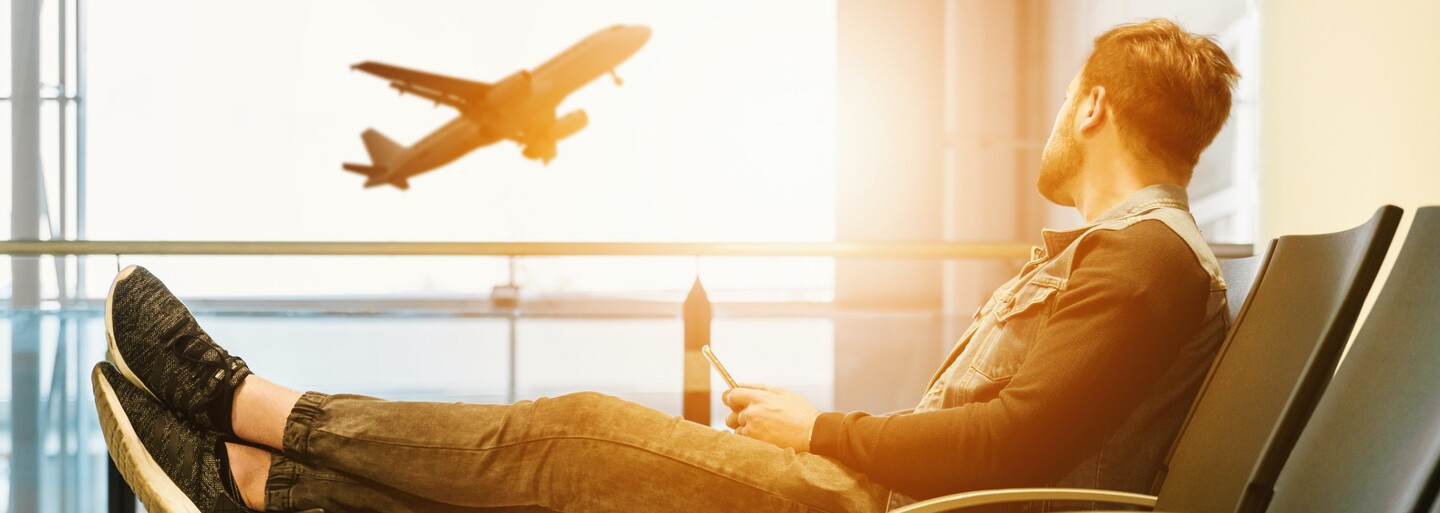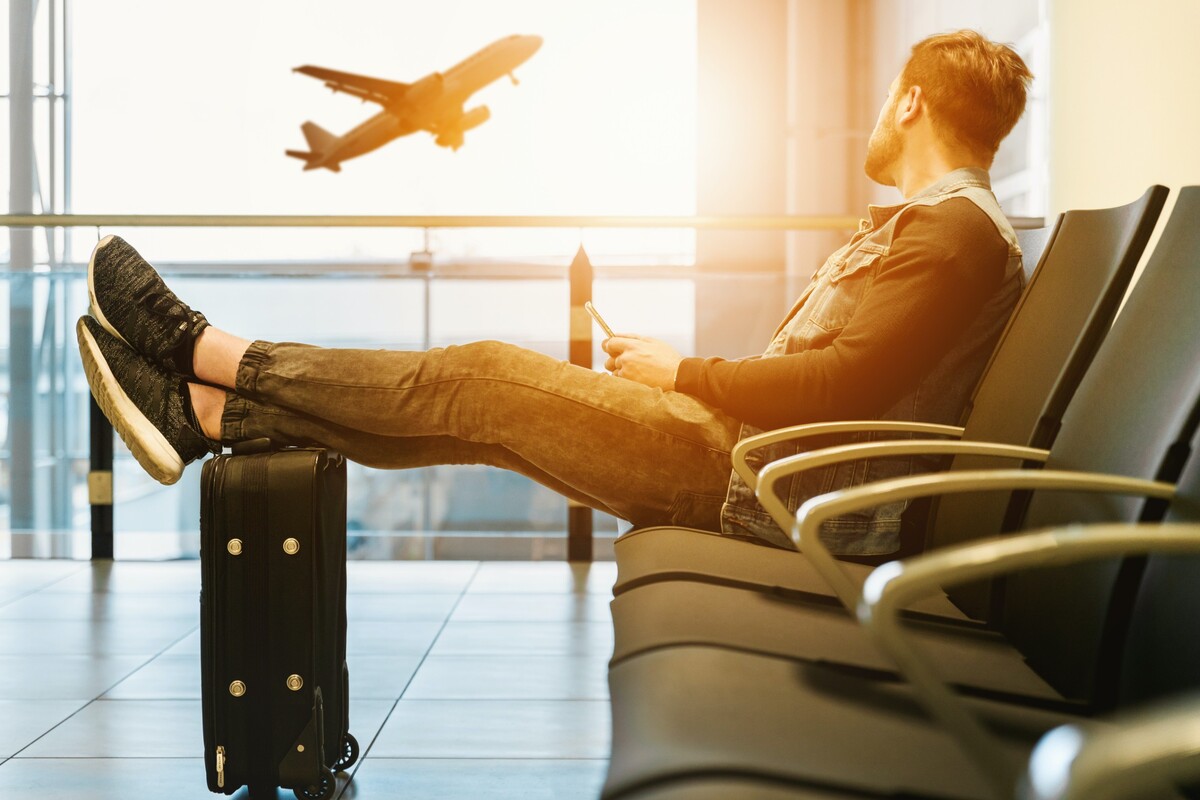 Latex model Natália: It turns me on to be a live f*ck doll. I can turn into a completely different person
Latex model Natália: It turns me on to be a live f*ck doll. I can turn into a completely different person
Latex model Natália: It turns me on to be a live f*ck doll. I can turn into a completely different person
Latex model Natália: It turns me on to be a live f*ck doll. I can turn into a completely different person
Fear Of Flying: How Does This Phobia Arise And How To Get Rid Of It? The Therapist Answers
Fear of flying is one of the most common types of phobias. According to statistics, anxiety about flying can affect up to 40 percent of people. Therapist Nikola Pavlíčková answers how aerophobia arises and how to fight it.
If problems persis, please contact administrator.

Flying is the safest way to travel. At least the statistics say so. According to the International Air Transport Association (IATA), the fatal accident rate for 2018 averaged 0.28 per 1 million flights, which equates to one fatal accident per 4.2 million flights. Airplanes take off and land more than hundreds of thousands of times a day, yet many people are more afraid of getting into them than getting into a car. According to the World Health Organization (WHO), 1.3 million people die each year as a result of traffic accidents (more than half of the victims are motorcyclists, pedestrians or cyclists).
If we want to fight a phobia, the most important thing is always to figure out what caused and continues to cause our phobia. This can be different for everyone.
How does a phobia arise? Parents can be a big influence
So what is behind the fear of flying, which is called aviophobia (sometimes also aerophobia), and how to overcome it? We asked psychotherapist Nikola Pavlíčková, whose focus includes phobias and overcoming them – she also deals with the psychology of sports and, in addition to better performance, helps people lead a better life. According to Pavlíčková, the answer to how aerophobia arises is not clear-cut. Phobias are not innate and a number of factors influence their emergence.
"Nobody is born with a phobia, it's a learned behavior throughout life. The exact causes of how aerophobia develops are not known, but several factors play a role. These include bad experiences, environment - learned behavior from parents who were afraid of flying and we inherited this phobia. Sometimes we can pick up a phobia from someone close to us, a friend or relative, but generally parents have the biggest influence. When we become parents, we worry about our children and we worry more about ourselves. The cause is different for everyone, everyone has a different combination of factors that affect them," the therapist explained for Refresher.
As every person is different, the degree to which the fear of flying affects us also varies, adds Pavlíčková. “It is influenced by physiological, psychological and social factors that are unique to each person. A bad experience can mean that we experienced strong turbulence, trauma that we experienced on vacation, movies where a plane crash was filmed. We can also be influenced by the news, where there is a report about a plane crash. Even this can trigger a fear of flying in us. For example, after 9/11, the number of people with this phobia increased,” she said.
We can also develop a fear of flying by associating traveling by plane with various unpleasant circumstances. "If, for example, we often fly for work and are under long-term stress, the fear of flying can manifest itself as a reaction to a long-term situation in which we do not feel well. Furthermore, the fear of flying can be intensified by other phobias, such as claustrophobia, fear of heights, bacillophobia. That is also why the fear of flying is treated like other phobias," explains Pavlíčková.

Thoughts amplify our emotions. So if we think about nothing else and think only about catastrophic scenarios, we feel much worse.
It is one of the most common phobias
The fear of flying is one of the most common types of phobias, it can be manifested by severe anxiety, increased heart rate, breathing difficulties and other symptoms. At the same time, flying has become far more frequent and safer in recent decades than it was at any time before. Professor Arnold Barnett from the Massachusetts Institute of Technology (MIT) also pointed out how little risk there is in flying today. "The risk is so small that being afraid of flying is like being afraid of going to the supermarket because the ceiling might collapse," he said.
Some studies suggest that people are less afraid of flying than in the past. For example, according to a Norwegian study, between 1986 and 2015, the rate of aerophobia in the population there fell from 8 percent to 3 percent, and so did the percentage of people who said they had never flown by plane (from 5 percent to 0.5 percent of Norwegians). The proportion of passengers who needed to "strengthen" themselves with alcohol before their flight also fell from 11 percent to 7.5 percent. Turbulence, unidentifiable sounds or the fear of a terrorist attack caused people the greatest anxiety or fear.
However, it is important to distinguish between people who have been diagnosed with a phobia by a doctor or therapist, and those for whom flying causes far less intense feelings of fear or anxiety. According to statistics, up to 40 percent of people experience some degree of these unpleasant feelings. However, far from all of them have a diagnosed phobia, such people are rather units of a percent.
Statistics vary in exact numbers. "Some report that aerophobia occurs in 3-40% of people, others in 1 in 3, with the lower numbers reflecting individuals with very severe anxiety who have been diagnosed by a professional, while the higher number includes people with mild symptoms, when it's not a phobia," says therapist Pavlíčková.
How to overcome the fear of flying? There are many methods
Just because we're afraid of flying doesn't mean we can't do anything about it. There are several effective methods to overcome this type of phobia and one day enjoy traveling by plane like everyone else. However, as therapist Nikola Pavlíčková points out, it depends, among other things, on how intense our unpleasant feelings are.
"It always depends on how strong the phobia is. If the client works on himself, it can always be mitigated, and in some cases even completely eliminated. The key is to talk about it. With our environment, with the environment we travel with, and last but not least with an expert," Pavlíčková explained for Refresher.
"There are several types of therapy - cognitive-behavioral, neurolinguistic programming, hypnotherapy, EFT therapy," adds the therapist, pointing out in one breath that, of course, it is impossible to determine one specific method that would be best for everyone in the treatment of aerophobia. The most important thing is not which particular therapy we choose, but that it works. And what works is different for each person, so it depends on our personal preferences and needs.
In addition to the above-mentioned forms of therapy, an interesting method of treating fear of flying is also virtual reality, where the client or patient experiences a simulated flight in a virtual environment. The use of this modern technology was tested by scientists from Israel, according to whose study published in 2021, this form of treatment can really have positive effects. And the fact that virtual reality can be effective as a form of therapy is also confirmed by other studies. Among other things, the use of virtual reality or a simulator provides the treated persons with a greater degree of privacy and therapists with greater control over the stimuli to which their clients are exposed.
In my experience, this type of phobia occurs in both men and women regardless of age, and I don't see much difference. The difference is that women are more likely to see a professional, while men feel they can handle it themselves (which is a general problem with therapy).
It is necessary to find the cause, fear is a natural thing
However, according to therapist Pavlíčková, the first step should be what exactly caused our phobia and what exactly our fear is connected to. "If we want to fight a phobia, the most important thing is always to find out what caused and continues to cause our phobia. This can be different for everyone. At the same time, it is necessary to specifically name what kind of fear it is: fear of takeoff, of landing, fear of heights, fear of not being in control, fear of confined spaces, fear of germs, fear of a large number of people," explained Pavlíčková .
Further steps follow from this. “Once we determine the cause and the specific fear, then we can work with it. Techniques used: working with thoughts and how we think about the situation, working with emotions, how we perceive emotions, how we can control and work with them, visualization, positive affirmations (I can do it, I believe I can do it, that everything it will turn out well...) and others," lists ways each of us can minimize our fear of flying.
The negative thoughts that take place in our head are often what can amplify and significantly intensify our unpleasant feelings about flying. It is normal to be afraid, but we should not let fear control us. This is why working with a therapist is important, as it can help us better understand our thoughts and help us not to let the negative ones take over us.
“Fear is a natural part of us, unless it goes beyond the tolerable limit. Therapies dealing with phobias focus primarily on working with thoughts. It works with negative thoughts that contribute to increasing fear. So that the client becomes aware of them and knows how to work with them differently. Thoughts amplify our emotions. So if we think about nothing else and think about catastrophic scenarios, we feel much worse. If we work with our thoughts, we can also influence our emotions. It is important to be able to think realistically, even positively. This will help us balance our unpleasant feelings," said Pavlíčková.
At the same time, the therapist highlights the importance of learning to work with emotions as such, which, according to her, can be helped by breathing, meditation, listening to music, but last but not least, visualizing fear and conducting a dialogue with our fear. "For severe anxieties, a few hours spent on a simulator with an expert can help," he says.
Pavlíčková also recommends educating yourself and increasing your own awareness of the process of flying in order to better understand some of the technical parameters, what happens when traveling on a plane at a given moment and why our fear is often irrational. “The more we understand how airplanes work, the easier it can be for us to experience the whole flight,” he says.
And last but not least, we should pay close attention to what triggers our fear or anxiety. “It's good to learn to recognize triggers. What triggers our fear. Whether it is that we think we will fly somewhere when we are at home, or this fear only comes at the airport or right on the plane. Or we are calm all the time, but the fear appears at the landing. If we know what triggers our fear, we can better work with it at the given moment," explains therapist Pavlíčková.

How long does it take to get rid of fear?
Since each aerophobic has a different intensity of fear or anxiety about flying, the origin of these feelings is different, and everyone can decide on a different form of therapy, it is also completely individual how long it will take for the person in question to get rid of the fear of flying. It is therefore impossible to determine whether this will be a process that will take weeks, months or even years.
"It always depends on what the initial state is. If we feel anxiety, even panic, when we have to fly, it will take longer. At the same time, it depends on how often we fly. It's not like, for example, a phobia of spiders, which we encounter almost on a daily basis, and we can work on this phobia much more often," says the therapist.
As already mentioned, it is not possible to determine exactly how many people struggle with the fear of flying, as the fear can manifest itself differently for everyone, and not everyone who feels anxious about flying is diagnosed as aerophobic. According to the expert, there is no fundamental difference in the prevalence of fear of flying between men and women, except perhaps that women are more likely to decide to seek professional help if necessary. But there are also those who do not know that therapy could help them with this problem.
"In general, this is difficult to determine, because most people who suffer from this phobia do not know that therapy would help them or do not even try to find a specialist and prefer to solve it by, for example, not flying or getting stronger with alcohol. But from my experience, this type of phobia occurs in men and women regardless of age, and I don't see any big differences. The difference is rather that women are more likely to visit a specialist, while men feel that they can handle it themselves (which is a general problem of therapy)," concludes Nikola Pavlíčková.
If problems persis, please contact administrator.












